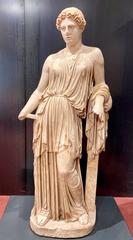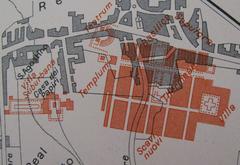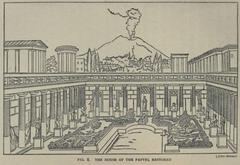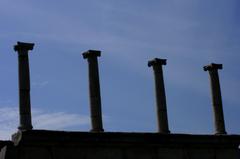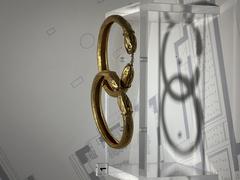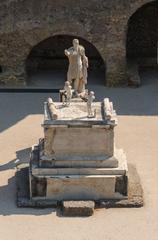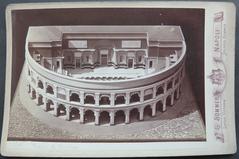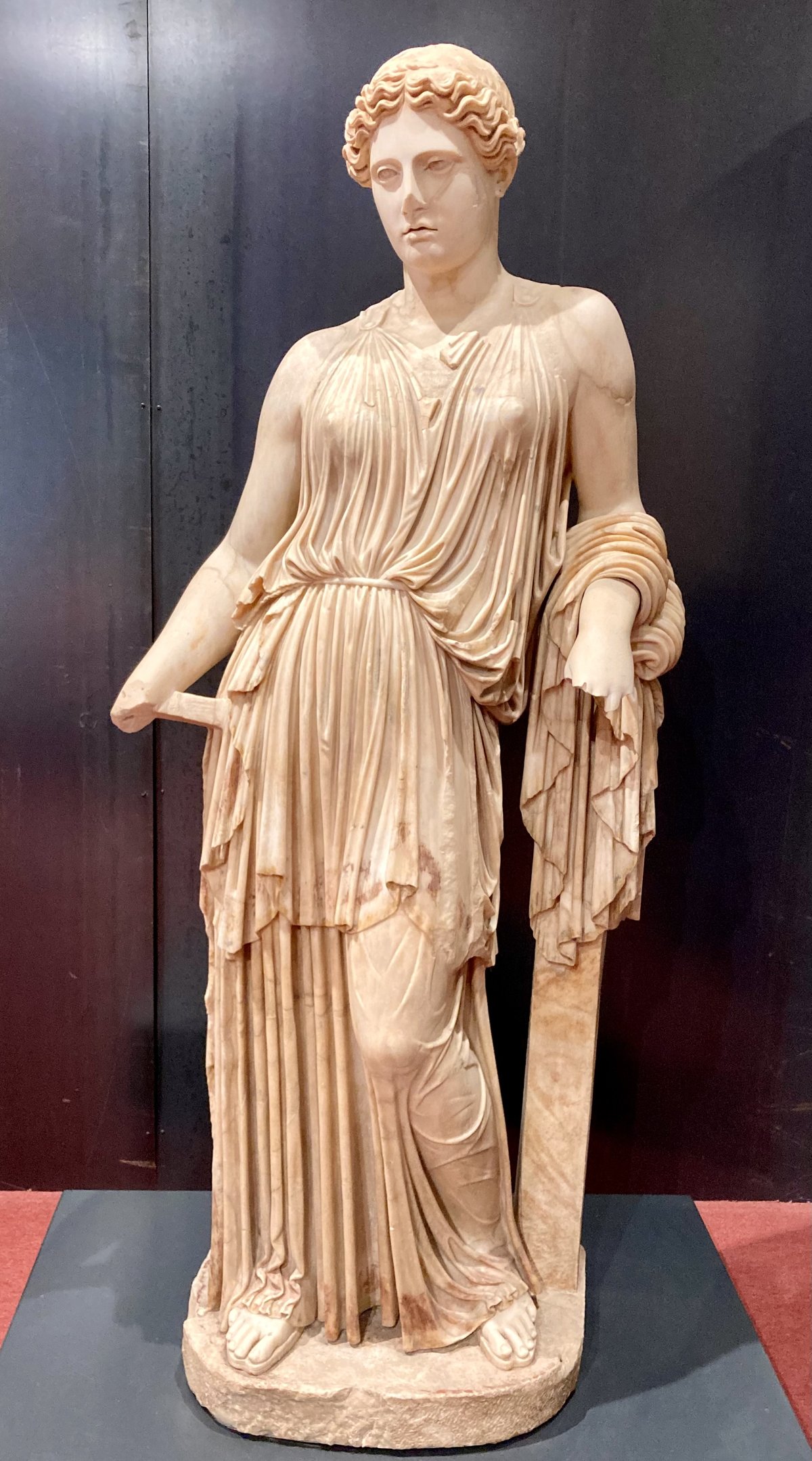
Villa of the Papyri Herculaneum: Visiting Hours, Tickets, and Historical Significance
Date: 14/06/2025
Introduction
The Villa of the Papyri in Herculaneum stands out as one of the most spectacular archaeological discoveries from the Roman world. Buried under volcanic debris during the eruption of Mount Vesuvius in 79 CE, this villa provides an exceptional glimpse into the lives, culture, and intellectual pursuits of Rome’s elite. It is especially renowned for its opulent architecture, extraordinary collection of sculptures, and, most distinctively, the only surviving Greco-Roman library, containing approximately 1,800 carbonized papyrus scrolls. These features make the villa a cornerstone of both classical studies and modern archaeological research (World History et cetera; BBC Culture; Herculaneum Ox.ac.uk).
This article will guide you through the villa’s discovery, architecture, art, and ongoing research, along with essential visitor information—such as visiting hours, ticketing, accessibility, and travel tips—to enhance your experience at Herculaneum and its nearby attractions.
Table of Contents
- Discovery and Excavation History
- Architectural Layout and Features
- Artistic Treasures: Sculpture and Decorative Arts
- The Herculaneum Papyri: The Ancient Library
- Ownership and Historical Significance
- Preservation and Current Status
- Visiting Information
- Ongoing Research and Archaeological Impact
- FAQs
- Conclusion
- References
Discovery and Excavation History
The Villa of the Papyri was first discovered in 1709 when an Austrian prince accidentally unearthed ancient remains while digging a well (World History et cetera). Systematic excavations began in the 1730s, with engineer Karl Weber mapping the villa’s complex layout. The villa gained its name due to the discovery of over 1,800 carbonized papyrus scrolls between 1752 and 1754—the only intact ancient library ever found (Madain Project; UNRV).
While the villa was entombed under 20–30 meters of volcanic material, only a fraction has been excavated due to technical and conservation challenges, with much of it still buried beneath modern Ercolano (Academia.edu).
Architectural Layout and Features
Spanning over 250 meters along the ancient coastline, the Villa of the Papyri is a testament to Roman luxury and innovative design (UNRV). Its architecture is characterized by:
- Peristyle Gardens: Central colonnaded courtyards adorned with fountains, pools, and a wealth of sculptures—demonstrating a seamless blend of nature and architecture.
- Residential Quarters: Lavishly decorated rooms with intricate mosaics and frescoes, preserved thanks to their volcanic burial (Nomad Epicureans).
- Library: The dedicated space for the papyri, located near leisure areas, reflecting the villa’s intellectual ethos (Herculaneum Tour Guide).
- Baths and Pools: Sophisticated hydraulic engineering is evident in the villa’s baths and water features.
- Terraces: Multi-level terraces descending towards the Bay of Naples, maximizing scenic views (BBC Culture).
The villa’s design inspired the Getty Villa in Malibu, a modern museum modeled on its floorplan (The Travel).
Artistic Treasures: Sculpture and Decorative Arts
Sculptural Collection
The villa yielded the largest collection of ancient sculptures found in a single context, with over 90 bronze and marble statues (UNRV). Highlights include:
- Bronze Athletes: Dynamic statues capturing athletic movement and Greek artistic influence.
- Portrait Busts: Depicting philosophers, poets, and possibly family members, indicating intellectual pursuits.
- Mythological Figures: Including the famed Drunken Satyr and the controversial Pan with a goat (BBC Culture).
Many of these masterpieces are displayed at the Naples National Archaeological Museum and the Getty Villa.
Decorative Arts
- Mosaic and Marble Floors: The villa’s floors feature elaborate mosaics and colored marble inlays, reflecting both Greek and Roman tastes.
- Frescoes: Though much remains unexcavated, surviving wall paintings suggest mythological and landscape scenes, creating a richly immersive environment.
The Herculaneum Papyri: The Ancient Library
The villa’s most significant discovery is its library of about 1,800 carbonized papyrus scrolls—the only ancient library to survive from the Greco-Roman world (Madain Project; Herculaneum Tour Guide). The texts are primarily philosophical, many attributed to the Epicurean philosopher Philodemus (Academia.edu).
Decipherment: Early attempts to open the scrolls caused much damage. However, 21st-century advances—such as X-ray micro-CT scanning and AI-driven virtual unwrapping—have revolutionized access to these texts. The 2023 Vesuvius Challenge and subsequent breakthroughs in 2025 enabled scholars to read hidden passages for the first time in nearly two millennia (smithsonianmag.com; ox.ac.uk).
Ownership and Historical Significance
Scholars widely associate the villa with Lucius Calpurnius Piso Caesoninus, Julius Caesar’s father-in-law—an esteemed patron of the arts and philosophy (UNRV). The villa’s scale and intellectual focus exemplify elite tastes of the late Republic and early Empire (De Gruyter).
The discovery of the Herculaneum papyri has profoundly impacted classical studies, providing rare insight into ancient philosophical traditions and Roman literary culture.
Preservation and Current Status
The villa’s preservation owes much to its burial under volcanic ash, which protected organic materials such as wood, food, and papyri (Along Dusty Roads). However, exposure since excavation has led to deterioration, prompting ongoing conservation efforts. Today, much of the villa remains unexcavated to ensure stability and protect modern buildings above.
As of 2025, the villa itself is generally closed to direct public access. Artifacts—including statues and papyri—are exhibited at the Naples National Archaeological Museum, and the Getty Villa offers a faithful architectural reconstruction (Naples Wise; The Travel).
Visiting Information
Visiting Hours and Tickets
- Herculaneum Archaeological Park Hours: Open Tuesday to Sunday, 9:00 AM–7:00 PM (last entry 6:00 PM). Closed Mondays and select holidays. Always verify current opening hours via the official website.
- Tickets: General admission is approximately €13, with discounts for EU citizens aged 18–25 and free entry for children under 18. Combined tickets for Herculaneum, Pompeii, and other sites are available. Advance online booking is recommended, especially in high season.
Accessibility
The site offers an accessible route (“Herculaneum for Everyone”) with ramps and adapted paths. However, some ancient structures and uneven surfaces may present challenges. Contact the park for detailed accessibility information (Naples Wise).
Guided Tours and Events
Expert-led tours and audio guides are available and highly recommended for in-depth understanding. The park and related museums occasionally host special exhibitions and educational events—check current offerings when planning your visit (Nomad Epicureans).
Nearby Attractions
Enhance your visit by exploring:
- Naples National Archaeological Museum: Home to many villa artifacts and papyri.
- The Getty Villa (Malibu, USA): Architectural recreation inspired by the Villa of the Papyri.
- Ercolano town: Offers local culture, dining, and views of Vesuvius.
- Other Herculaneum sites: Such as ancient theaters and bathhouses.
Ongoing Research and Archaeological Impact
The Villa of the Papyri has shaped the development of modern archaeology and papyrology. Its discovery in the 18th century inspired new archaeological methods (Academia.edu). Current research relies on non-invasive mapping, digital reconstruction, and advanced imaging to explore the villa and decipher the remaining scrolls (De Gruyter).
The Vesuvius Challenge and AI-driven breakthroughs are enabling scholars to read texts previously thought lost forever, contributing to a new era in classical studies (smithsonianmag.com).
FAQs
Q: What are the visiting hours for the Villa of the Papyri?
A: The villa itself remains closed to direct public access, but the Herculaneum Archaeological Park is open Tuesday–Sunday, 9:00 AM–7:00 PM. Check for updates on the official site.
Q: How can I buy tickets?
A: Tickets are available online or at the park entrance. Advance booking is recommended.
Q: Is the villa accessible to people with disabilities?
A: The archaeological park offers accessible routes, but some areas may be difficult due to ancient structures.
Q: Are guided tours available?
A: Yes, guided tours and audio guides are available and highly recommended.
Q: Where can I see artifacts from the villa?
A: Many artifacts and papyri are displayed at the Naples National Archaeological Museum. The Getty Villa in Malibu is a faithful reconstruction with related exhibits.
Conclusion
The Villa of the Papyri represents a unique intersection of Roman luxury, art, and intellectual achievement. While the villa itself is only partially accessible, the broader Herculaneum Archaeological Park and museums in Naples and Malibu allow visitors to engage deeply with this remarkable heritage. As ongoing research and technological innovation continue to unlock new secrets from the villa’s ruins and papyri, the site’s global significance only increases.
To plan your visit, check official resources, book your tickets in advance, and consider guided tours for the richest experience. For more travel tips and updates, download the Audiala app, follow us on social media, and explore our other articles.
References
- World History et cetera
- BBC Culture
- Academia.edu
- De Gruyter
- History of Information
- University of Oxford
- Smithsonian Magazine
- Herculaneum Society
- World History
- Pompeii With Archaeologist
- The Travel
- Naples Wise
- Academia.edu
- Archaeology Magazine
- Parco Archeologico di Ercolano
- Madain Project
- UNRV
- Nomad Epicureans
- Herculaneum Tour Guide
- Along Dusty Roads
Suggested images:
- Panoramic view of Villa of the Papyri ruins (alt: “Villa of the Papyri archaeological site in Herculaneum”)
- Close-ups of mosaic floors and sculptures (alt: “Mosaic floor and bronze sculpture from Villa of the Papyri”)
- Map of Ercolano with villa location (alt: “Map showing Villa of the Papyri and Ercolano historical sites”)
For more on Herculaneum, Roman villas, and conservation efforts, see our related articles.
